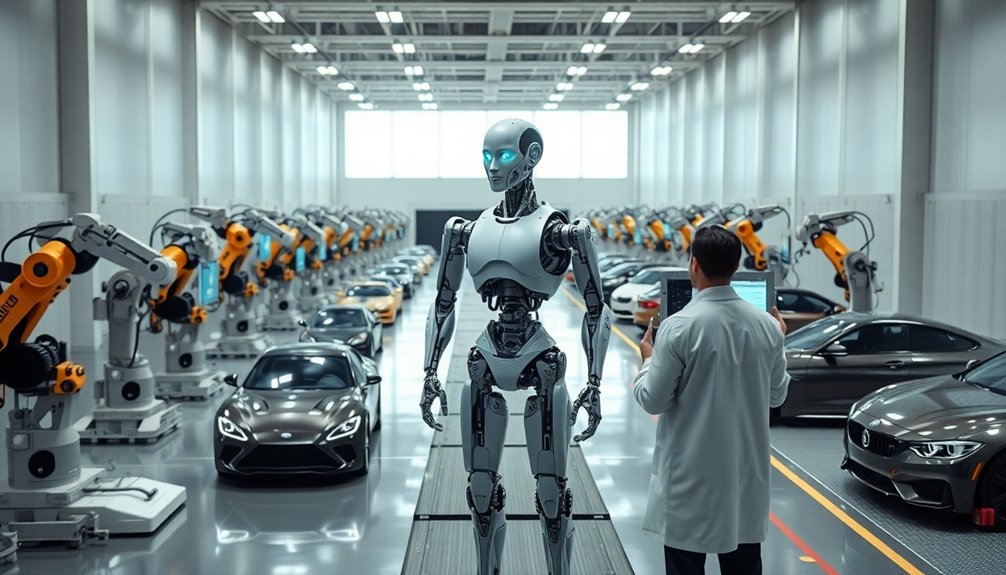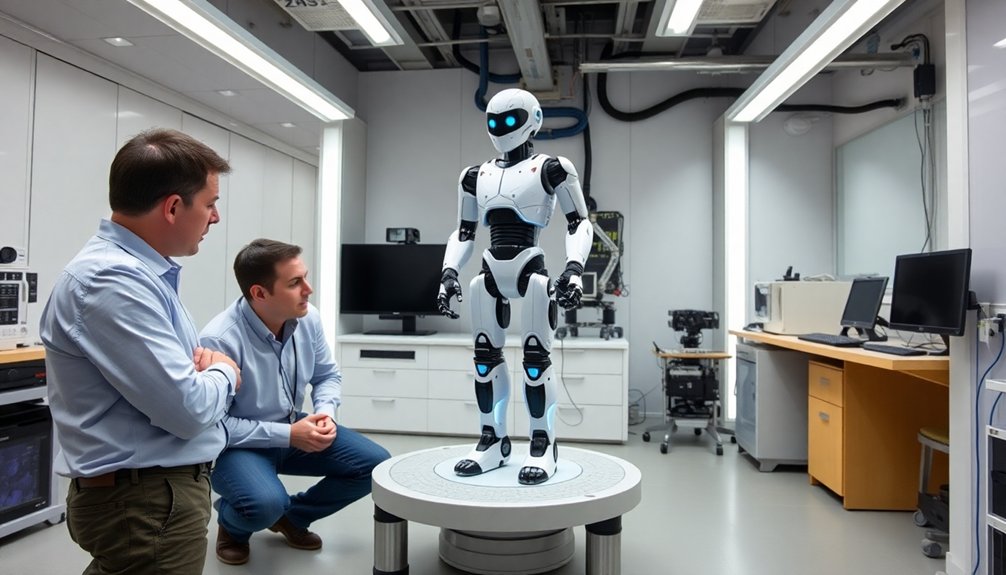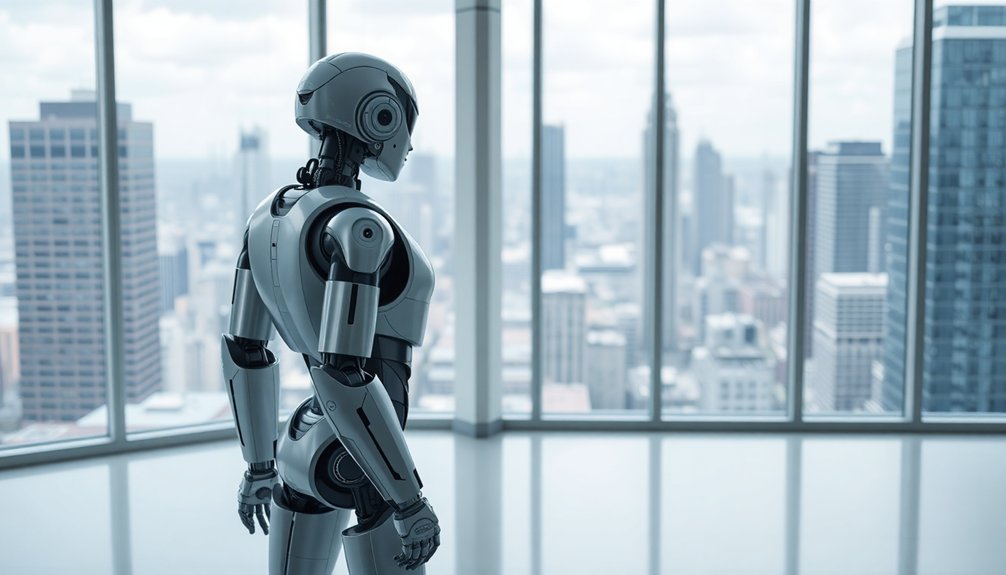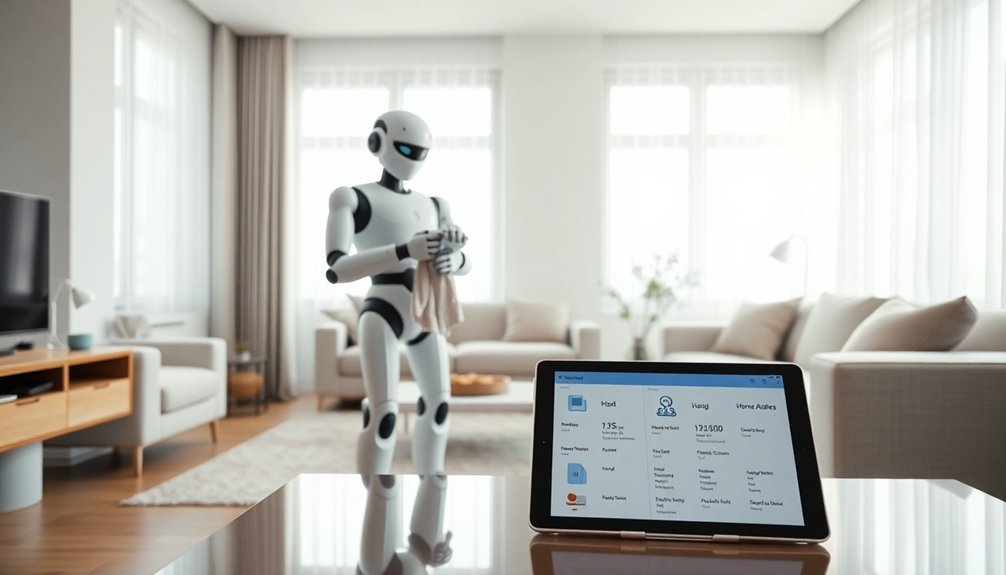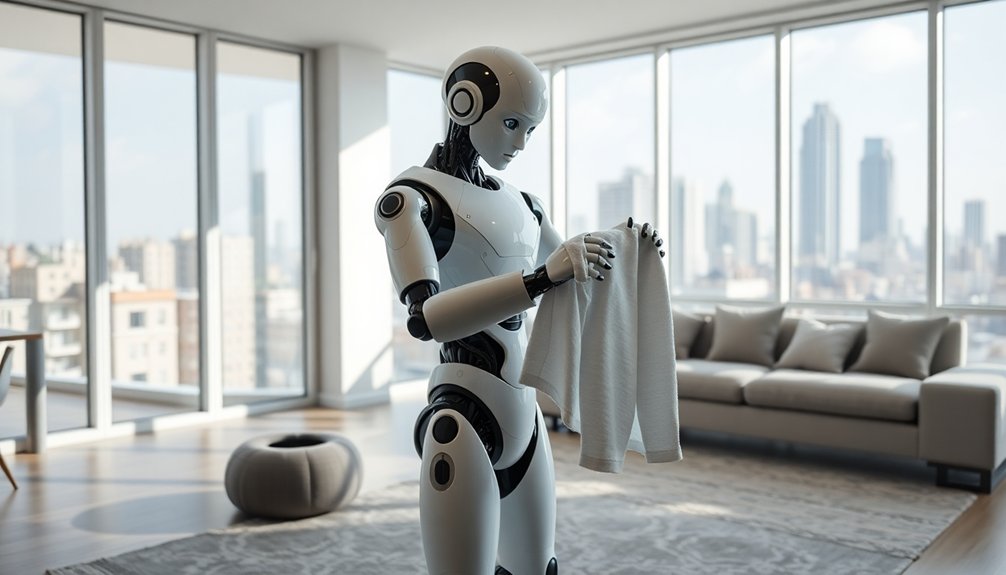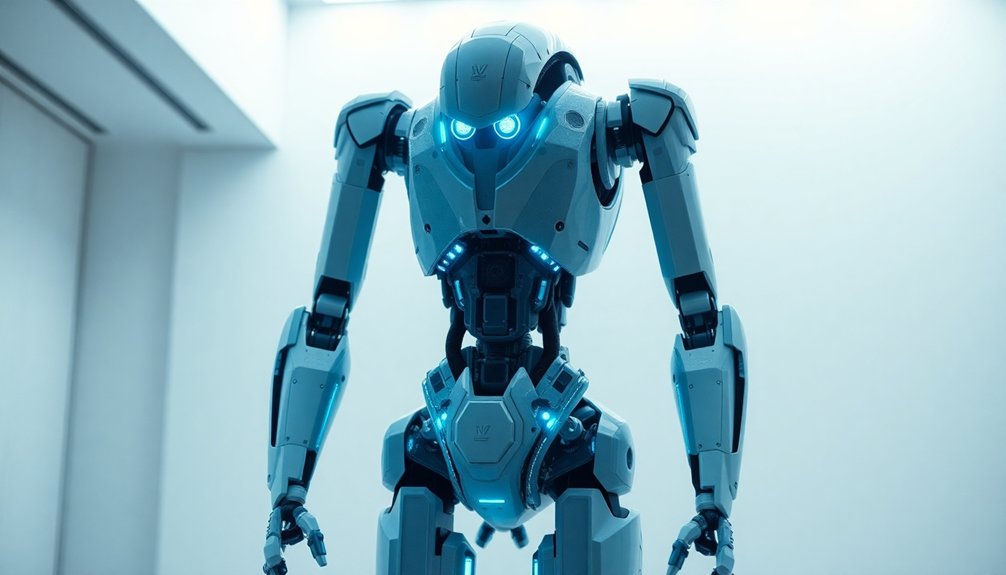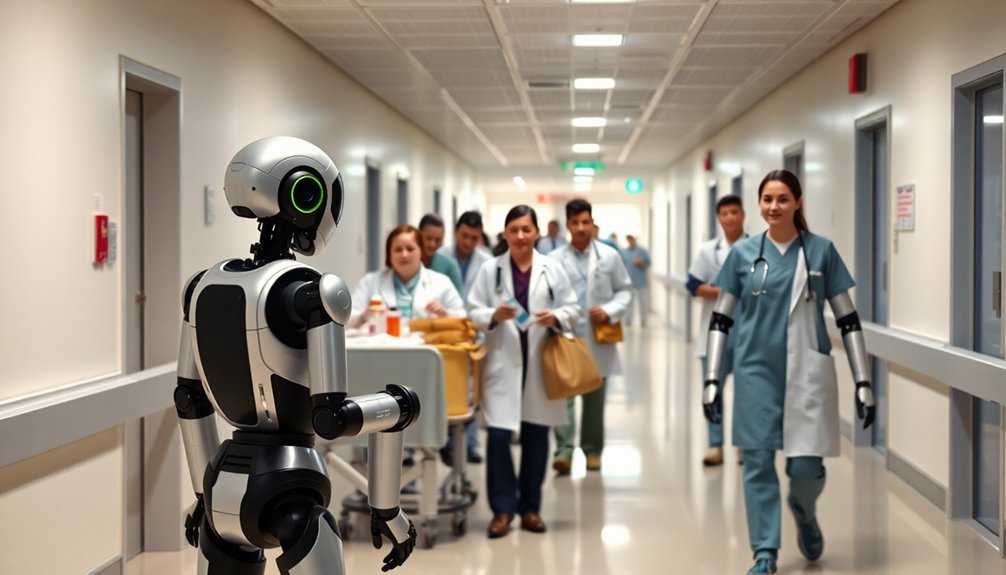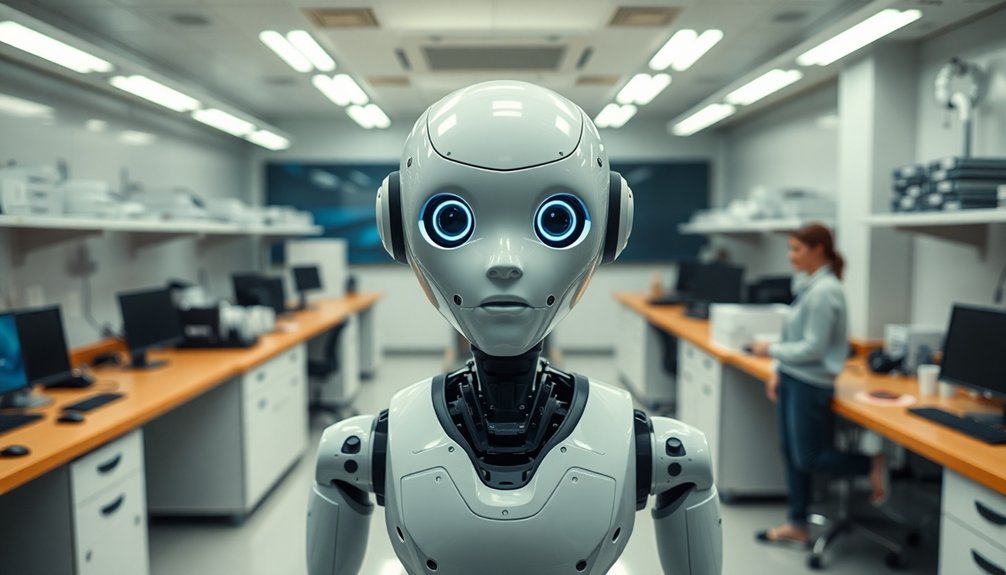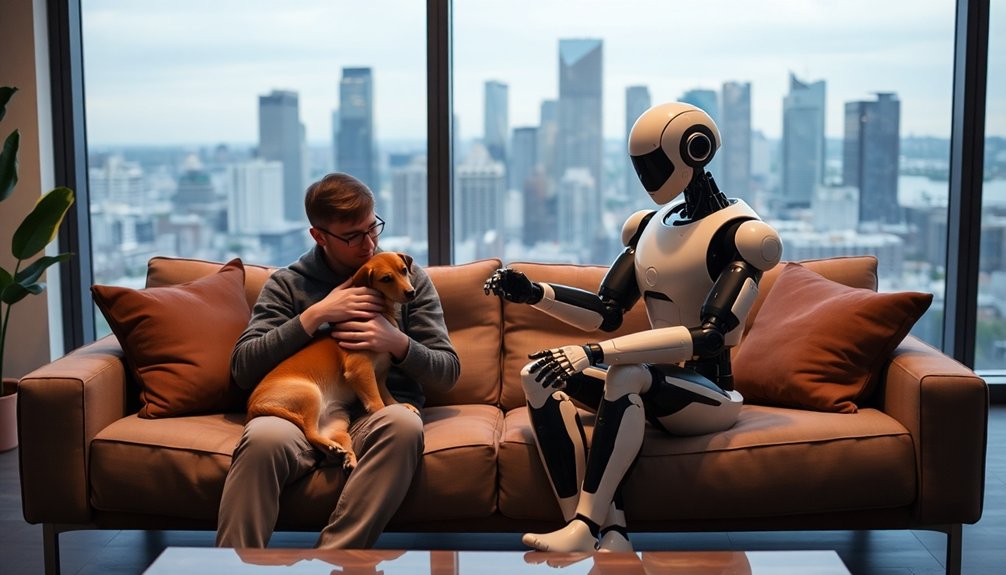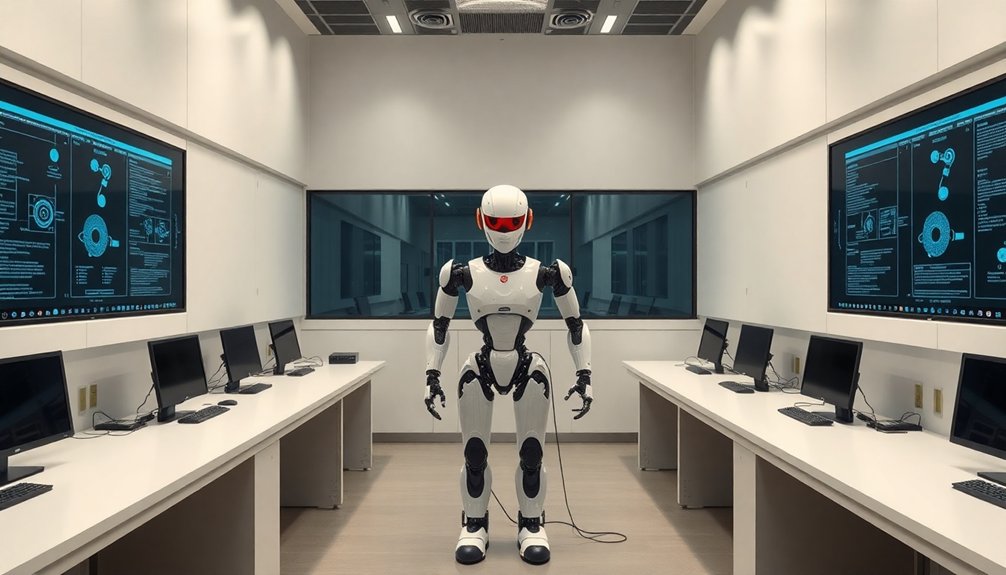Humanoid robots aren’t just gadgets anymore—they’re the ultimate tech flex for the wealthy. We’re seeing robots like the Unitree G1 transform from sci-fi dreams into must-have status symbols that scream “I’m future-ready.” Priced around $16,000, these AI companions are more than machines; they’re living price tags at elite social gatherings. Want to signal you’re ahead of the technological curve? This is how Silicon Valley’s smartest are doing it now.
The Luxe Tech Landscape: Humanoid Robots as Premium Assets
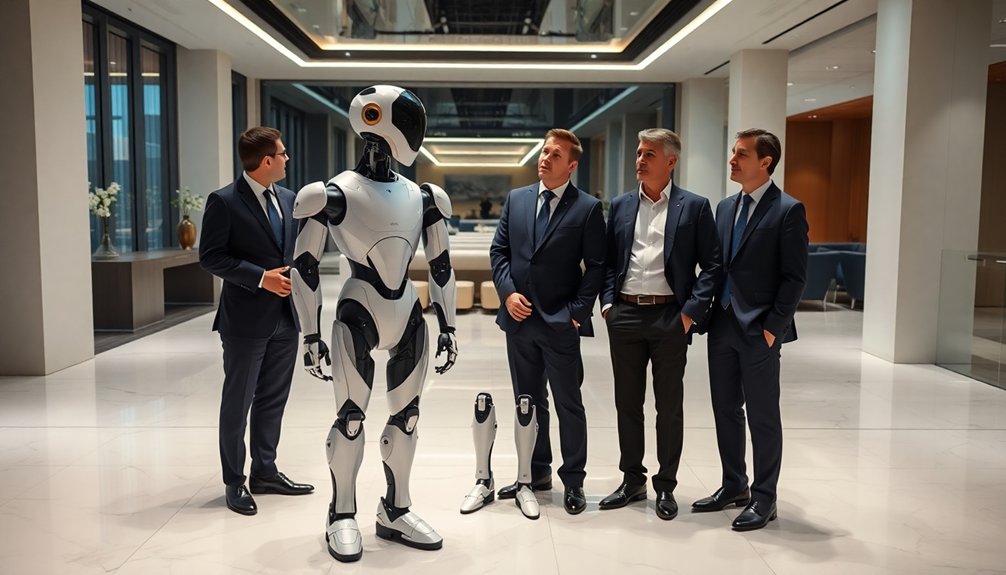
In the glittering world of tech luxury, humanoid robots are quickly becoming the next must-have status symbol for the innovation-obsessed elite.
We’re witnessing a radical shift where robotic prestige isn’t just about functionality—it’s about making a statement. Companies like Tesla and Xiaomi are transforming these machines from mere gadgets into premium innovation that screams “I’m ahead of the curve.” The Unitree G1 robot exemplifies this trend with its advanced AI-driven design and multiple model options. Robotic workforce integration is fundamentally reshaping how we perceive technological innovation and personal sophistication.
Think of humanoid robots as the new luxury watches: complex, expensive, and dripping with technological swagger. They’re not just tools; they’re conversation pieces that demonstrate your cutting-edge sensibilities.
With projections showing the market could hit $30 billion by 2035, these robots aren’t just cool—they’re becoming the ultimate tech flex for those who want to showcase their forward-thinking lifestyle. North American technological leadership is driving this trend, with the region poised to dominate the global humanoid robot market through advanced AI innovations.
The average selling price of $120,000 to $150,000 for these robots only amplifies their exclusivity and desirability among tech enthusiasts and luxury connoisseurs.
Social Signaling Through Robotic Ownership
Imagine walking into a cocktail party with a sleek, perfectly programmed humanoid that does everything from mixing martinis to dropping witty conversation starters, instantly marking you as a tech-savvy elite. Global market trends suggest that these advanced robotic companions are emerging as sophisticated status symbols that reflect not just wealth, but technological sophistication.
More than just expensive gadgets, these robotic companions have become the ultimate social currency, transforming how we broadcast our economic and technological prowess. As robot density increases, ownership becomes a powerful marker of one’s position in the technological hierarchy. North American markets are leading this trend, with household robotics projected to grow exponentially, making robotic ownership not just a luxury, but a statement of technological sophistication.
Wealth Through Technology
Somebody once said that wealth isn’t just about money anymore—it’s about owning the shiniest tech that makes your neighbors do a double-take.
In our digital luxury landscape, humanoid robots are becoming the ultimate wealth innovation flex. Think of them like the Teslas of the robotics world—not just functional, but a statement piece that screams, “I’m future-ready.” At $16,000 a pop, these AI-powered companions aren’t just tools; they’re status symbols that signal you’re plugged into the cutting edge. Biomimetic design principles enable these robots to mimic complex biological movements, adding an extra layer of technological sophistication. With market projections indicating billion-robot future, these technological marvels represent more than just a purchase—they’re an investment in social capital. By 2050, robot market supremacy will define technological leadership, with China projected to dominate the global humanoid landscape.
As robots become more sophisticated, owning one isn’t just about utility—it’s about broadcasting your tech-savviness. Who wouldn’t want a walking, talking symbol of technological prowess standing in their living room, silently telling the world you’re ahead of the curve?
Elite Social Currency
Beyond mere technological acquisition, humanoid robots have become the ultimate flex in elite social circles—think of them as the platinum credit cards of the AI world. Advanced neural networks that enable complex learning make these robots more than just mechanical accessories, proving technological sophistication is the new luxury marker. Social interaction capabilities transform these robots from mere machines into sophisticated companions that demonstrate technical and emotional intelligence.
They’re not just machines; they’re conversation starters that open doors to elite friendships and robotic exclusivity. Imagine walking into a tech gala with a custom-designed Sophia or Ameca, turning heads faster than a startup’s IPO.
These aren’t just robots; they’re status symbols that whisper, “I’m not just keeping up with technology—I’m defining its future.”
Want to signal you’re ahead of the curve? Forget designer watches or luxury cars. A humanoid robot says you’re living in 2030 while everyone else is stuck in 2023.
It’s less about ownership and more about making a statement that screams innovation.
Wealth Display in the Age of Artificial Intelligence
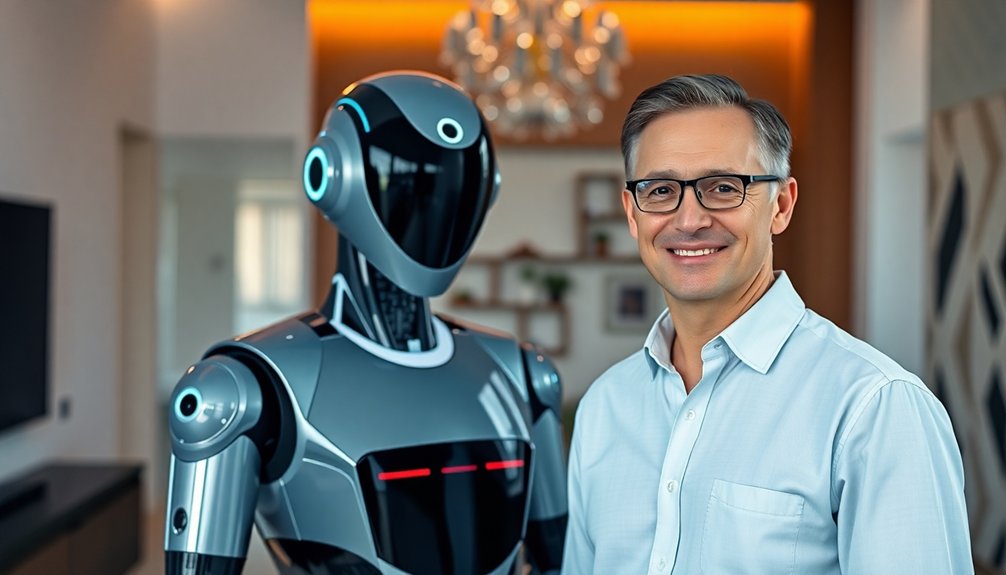
We’re entering an era where humanoid robots aren’t just machines, they’re living price tags that scream “look how loaded I am”. With the global humanoid robot market projected to grow by massive market value USD 59.18 billion from 2025 to 2029, owning one is becoming the ultimate technological status symbol. Imagine walking into a cocktail party with a sleek, AI-powered robot that knows your guests’ names before you do—that’s not just technology, that’s a flex of pure technological wealth. When robots become the ultimate accessory of the tech elite, who wouldn’t want to signal their financial and intellectual status with a machine that’s part butler, part conversation piece, and entirely a status symbol? Key technological developments from the United States and China are fueling this robotic revolution, making humanoid robots the most coveted symbol of cutting-edge sophistication.
Luxury Tech Signaling
As artificial intelligence reshapes our understanding of luxury, tech has become the new peacock’s tail—a dazzling display of wealth that whispers (or sometimes shouts) about who’s winning the status game. Shifting consumer values are driving a trend where wealthy individuals now prioritize unique technological experiences over traditional material possessions.
Luxury customization isn’t just a trend; it’s a full-blown competition where exclusive tech signals your place in the pecking order.
We’ve moved beyond basic gadgets into a world where AI-powered devices and rare tech experiences become more than products—they’re personal statements.
Want to prove you’re ahead of the curve? Snag a limited-edition humanoid robot or an invite-only tech event membership.
The exclusivity appeal isn’t just about owning something expensive; it’s about owning something most people can’t even imagine.
Welcome to status signaling 2.0, where your tech speaks louder than your words ever could.
Robotic Wealth Display
Luxury tech whispers have now morphed into a full-blown robotic cacophony of wealth display.
We’re seeing digital wealth management transform from nerdy spreadsheets to sleek AI-powered platforms that make investing look cool. With robo-advisors growing 26.71% annually, financial accessibility isn’t just a buzzword—it’s a revolution.
Generation X and Millennials are driving this robotic innovation, turning complex investments into swipe-and-invest experiences that feel more like playing a game than managing money.
Who wouldn’t want an AI assistant handling their portfolio while they Netflix and chill?
The future looks like personalized wealth strategies powered by algorithms smarter than most human financial advisors, delivered through your smartphone.
Welcome to wealth management 2.0—where technology does the heavy lifting and you reap the rewards.
AI Status Markers
Three decades ago, having an AI-powered investment platform was like owning a rare sports car—now it’s becoming the digital equivalent of a platinum credit card.
We’re witnessing AI exclusivity transform from tech nerd fantasy to serious wealth marker. With robo-advisors managing nearly $6 trillion and investment returns climbing 27%, AI isn’t just a tool—it’s a status symbol.
Tech prestige now means showing off algorithms that predict market moves faster than human traders. Want to impress at dinner parties? Drop casual references to your AI-driven portfolio that automatically rebalances assets and tracks global sentiment.
It’s not just about money anymore; it’s about demonstrating you’re plugged into the most sophisticated financial technologies. Who needs a luxury watch when you can flex your algorithmic investment strategy?
Celebrity Influence and Technological Prestige
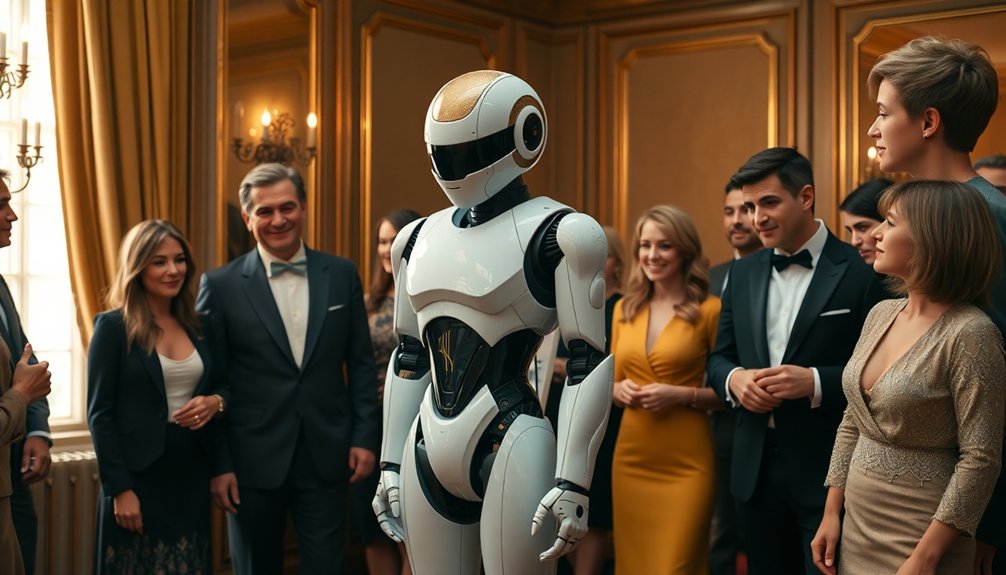
When celebrities start flaunting humanoid robots like the latest designer handbag, it’s understood something big is happening in tech culture.
Celebrity endorsements are turning these mechanical companions into serious status symbols. Think Kim Kardashian posing with a sleek android that’s part personal assistant, part fashion statement.
Robots are the new designer accessory: part tech marvel, part personal branding statement for the elite.
Technological prestige isn’t just about the latest iPhone anymore — it’s about who’s got the most advanced robotic friend.
We’re watching a cultural shift where AI companions represent more than technology; they’re markers of innovation, wealth, and cutting-edge coolness.
Imagine walking into a party with a robot that looks and thinks like your personal digital twin.
Suddenly, your tech isn’t just a tool — it’s an extension of your personal brand, a reflection of how forward-thinking you are.
Cultural Shifts in Status Symbol Perception
As humanoid robots slide from sci-fi fantasy into our everyday reality, they’re reshaping what it means to flex technological muscle. Humanoid perceptions are transforming, where robotic aesthetics now signal cutting-edge status more powerfully than last decade’s luxury cars.
| Traditional Status | Emerging Status |
|---|---|
| Designer Watches | Advanced Robots |
| Sports Cars | AI Companions |
| Private Jets | Personalized Algorithms |
| Rare Art | Innovative Tech |
| Expensive Homes | Smart Ecosystems |
We’re witnessing a radical cultural pivot where technology isn’t just a tool—it’s a statement. Imagine walking into a room with a custom humanoid robot that learns, adapts, and represents your personal brand of innovation. Who wouldn’t want that conversation starter? The future isn’t just arriving; it’s strutting in on mechanical legs, challenging everything we thought we knew about status, style, and social signaling.
Economic Dynamics of Robotic Acquisition
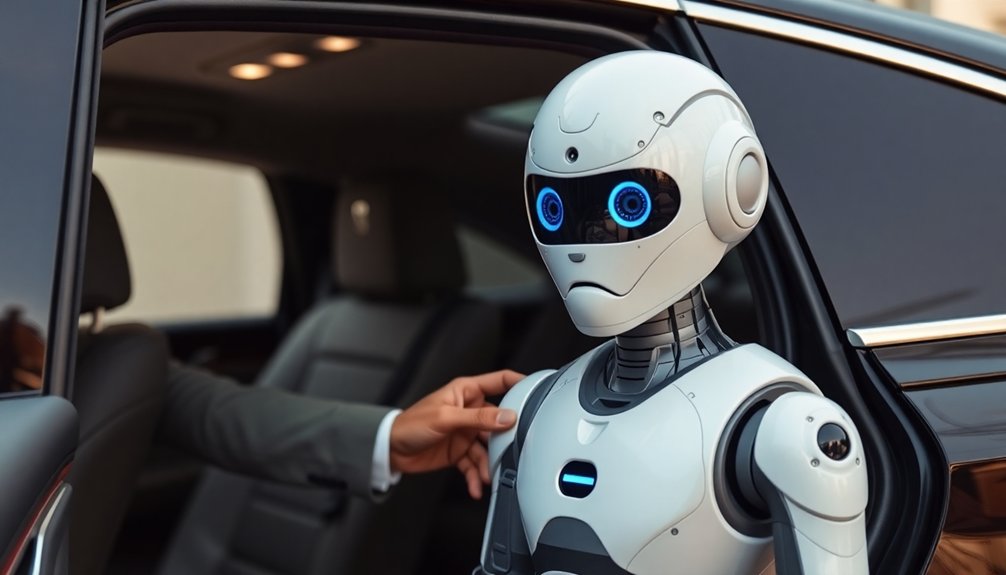
The shiny veneer of status symbols is morphing from luxury goods to technological prowess, and nowhere is this more apparent than in the economics of robotic acquisition.
We’re witnessing a new frontier where affluent automation isn’t just about having the coolest gadget—it’s about owning a piece of the future.
Robotic investment is no longer reserved for tech giants; it’s becoming a playground for those who want to signal their cutting-edge sensibilities.
Robotic prowess is the new social currency, signaling technological sophistication beyond traditional status markers.
As market costs drop and AI capabilities surge, humanoid robots are transforming from industrial workhorses to must-have accessories for the tech-savvy elite.
Think of it like the first Tesla—expensive, impressive, and guaranteed to turn heads.
Who wouldn’t want a personal robot that screams, “I’m ahead of the curve”?
People Also Ask
Can I Customize My Humanoid Robot to Match My Personal Style?
We can definitely customize our humanoid robot with personal design choices, exploring various customization options to match our unique style and preferences through modular components and personalization apps.
How Safe Are Humanoid Robots Around Children and Elderly Family Members?
We’ve developed strict safety protocols for child interaction, ensuring humanoid robots have sensors, controlled movements, and programmed boundaries to minimize risks around vulnerable family members.
Will Humanoid Robots Be Covered by Home Insurance Policies?
Like a digital Wild West, we’re traversing uncharted insurance terrain. Home policies aren’t yet ready for humanoid robot coverage, leaving liability concerns hanging in legal limbo as technology races ahead.
Are There Potential Legal Restrictions on Owning Personal Humanoid Robots?
We’re seeing emerging robot ownership laws that address liability issues, with potential restrictions based on AI capabilities, safety regulations, and the robot’s intended use in personal settings.
How Complex Is the Maintenance and Programming of a Humanoid Robot?
Like intricate mechanical dancers, we navigate the labyrinth of robot programming and maintenance challenges. Our humanoid companions demand specialized expertise, with complex joints and AI-driven systems requiring constant, nuanced care.
The Bottom Line
We’re witnessing a digital revolution where humanoid robots aren’t just tech—they’re status badges. Like vintage Rolexes or rare Ferraris, these mechanical marvels signal wealth, innovation, and social cachet. Our robotic companions are more than machines; they’re living metaphors of technological prowess, whispering stories of progress and personal achievement. The future isn’t just coming—it’s already in our living rooms, judging us with algorithmic side-eye.
References
- https://mikekalil.com/blog/2024-year-of-the-humanoid-robot/
- https://luxcior.com/the-future-has-a-body-introducing-figure-02/
- https://www.forwardfuture.ai/p/your-new-roommate-is-made-of-steel-home-robots-are-about-to-rewrite-daily-life
- https://resident.com/tech-and-gear/2025/05/23/elon-musk-predicts-insatiable-demand-for-optimus-robots
- https://www.insightaceanalytic.com/report/humanoid-robot-market/2907
- https://www.edge-ai-vision.com/2025/04/humanoid-robots-2025-2035-technologies-markets-and-opportunities/
- https://www.prnewswire.com/news-releases/humanoid-robot-market-to-grow-by-usd-59-18-billion-2025-2029-driven-by-demand-for-industrial-flexibility-report-highlights-ai-impact-on-market-trends—technavio-302357327.html
- https://www.roboticstomorrow.com/news/2025/03/06/humanoid-robot-market-could-reach-usd-672-billion-by-2034/24383/
- https://www.morganstanley.com/insights/articles/humanoid-robot-market-5-trillion-by-2050
- https://uu.diva-portal.org/smash/get/diva2:1921003/FULLTEXT01.pdf


